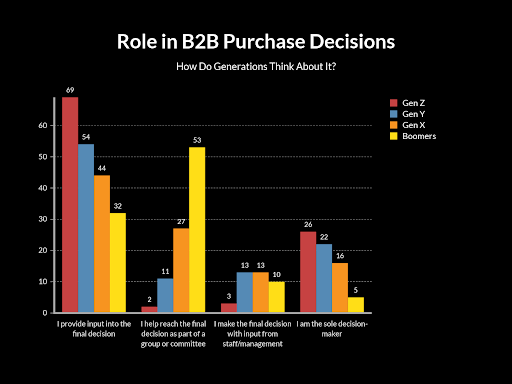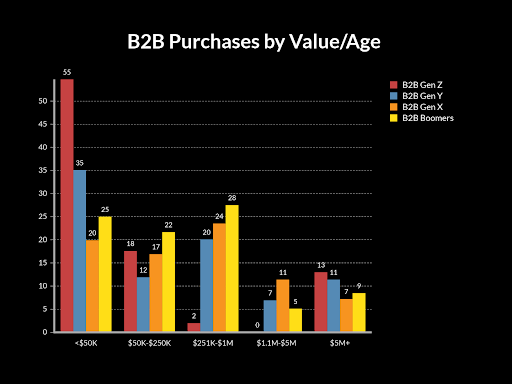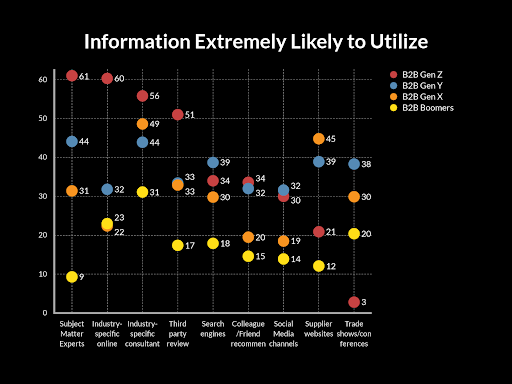News and Insights
There’s Intel to Be Gained Looking at B2B Buyers’ By Generation
January 28, 2020
Age is heavily valued in consumer marketing but it’s money left on the table in B2B marketing
For some reason when it comes to marketing to B2B target audiences many practitioners tend to think of them as one composite role within an organization, such as “chief marketing officer” or “information technology director” as if all people who have those roles are the same person irrespective of age, gender and other demographic factors — things typically central in consumer marketing. One could easily conceive that Pepsi may have as many as a dozen different audience personas that represent different ages, genders and backgrounds. So why does B2B marketing not take this into account frequently?
I took a look at the responses in our B2B Buyer’s INfluence Report we conducted with Global Web Index and looked for disparities in responses based on age of respondents. Some interesting things appeared.
Attitudinally, the younger B2B buyers are the more optimistic and empowered they feel about purchase decisions. Millennials are by far the most confident they were paying a reasonable price (83%), that the vendor would deliver (97%) and that their company was being valued (89%). Generation X and Boomers scored in the single digits for these responses. Customer service is another area where the younger the buyer the more good service was valued. Generation Z (63%) felt strongest about service, followed by Millennials (40%), Gen X (34%), and Boomers (16%). Somewhat intuitively, the younger the buyer the more they valued the frequency of communications with suppliers and vendors. The order played out exactly as the responses to customer service, with greatest intensity from Gen x (65%) to Boomers (11%).
Older Gen X B2B buyers stood out in just a couple responses. They valued the suppliers’ brand standing out in the market more than other B2B buyer generations. Gen X buyers also had the strongest sense of pride to be associated with the supplier they selected.
A sense of empowerment among B2B buyers is higher among younger generations. Gen Z and Millennials are more likely to feel they provide input to the final decision and that they are the sole decision maker. Older B2B buyers felt they are more likely to be part of a committee making decisions.

But that sense of empowerment should be put in context since young buyers are the generations most involved in the smallest purchases below $50,000.

One gets a sense of intensity around the responses younger B2B buyers. They rarely feel mediocre about most purchasing influences and qualities about suppliers. Looking at the youngest Gen Z buyers you can easily see the widest range of responses compared to any other generation. Purchase decision factors are different among Millennials, Gen X and Boomers but on the whole much more consistent than Gen Z.

So what does this mean for B2B marketers? It’s pretty easy to just focus on putting the things each generation care about front and center in emails, landing pages, and interactions we program into your sales journeys. The problem is that we rarely capture age information so it’s going to require enriching the data around prospects through third-party providers such as Full-Contact or manually scanning LinkedIn for graduation dates as an age indicator, mainly because you’re probably not going to (and shouldn’t) start asking for age information on landing page forms. Given the wide variance of some of these responses when segmented by age, it’s probably worth the investment.
To learn more about our B2B Buyers Influence Report data visit finnpartners.com/b2b or feel free to ping me on email, Twitter or LinkedIn.